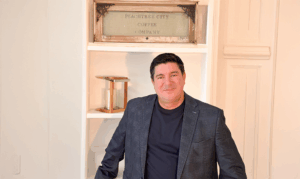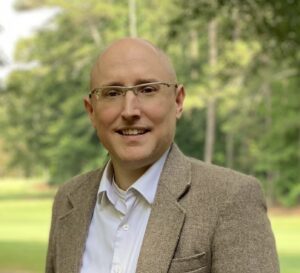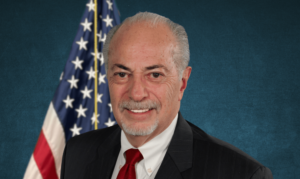Roadblocks erected by Mayor Haddix and Mr. Dienhart in the Peachtree City Council threaten to perpetuate and expand the traffic jam on Ga. Highway 54 West.
The commercial development at Line Creek Drive south of Hwy. 54 continues to languish but remains the focus of political diatribe.
The roadblocks are caused, in my humble opinion, by the mayor’s misunderstandings regarding traffic, traffic control, and traffic studies, and by Mr. Dienhart’s contentions that promises have been made, and are being broken.
There are also, I believe, misunderstandings among the public, including a widespread inability to separate development and traffic. Let’s start with traffic.
According to city staff, traffic volume on Hwy. 54 West has already exceeded 2026 traffic projections. That’s 13 years ahead of schedule.
It’s also a prime indicator that we will reach the 2040 forecast of 50,000 vehicles per day — up from the current 32,000 — a lot sooner than 2040.
This trend, plus projected commercial growth on Line Creek Drive and elsewhere along Hwy. 54 West underscore the urgent need to update our planning documents with new data, now.
Mayor Haddix asserts that we don’t need a new traffic study because the Georgia Department of Transportation plans to start one in four or five years, to be completed in 2020.
The mayor is trolling a red herring, dragging a dead fish across our path to distract us from the real issues.
We can’t wait for a plan that won’t be published until 2020 to identify solutions and get those solutions incorporated into Atlanta Regional Commission (ARC) and GDOT plans and — more important — budgets.
The 2020 Plan and existing plans such as Fayette Forward 2010 and the ARC 2040 Regional Plan (which is now being revised) are high-level, conceptual documents. We need engineering studies, not concepts.
If GDOT will conduct and pay for this study, it likely will take a long time. It will take even longer to get recommendations budgeted and implemented. This argues strongly for the city of Peachtree City to pay for a study.
The potential cost of such a study is another red herring, especially compared with the cost of congestion.
The 2010 Fayette Forward transportation study places the annual cost of congestion in Fayette County to be something between $91 million and $145 million by 2030. Much of this is incurred in the Hwy. 54 corridor and its busiest intersection at Ga. Highway 74.
We can expect that a good bit of the cost of congestion could be obliterated by implementing real solutions based on real numbers.
What might we do in the meanwhile?
I have proposed that the city look closely at a real-time adaptive traffic control system for the Hwy. 54 corridor from City Hall to MacDuff Parkway, to include sensors on Hwy. 74. Such systems have been used successfully worldwide for more than 20 years.
The mayor’s argument that Cobb County didn’t find theirs beneficial eight years ago is no longer valid: the technology has improved and Cobb County has expanded their system significantly. There are scores of reports of successful implementations.
The mayor’s assertion that we can’t improve traffic flow on Hwy. 54 because it’s already being monitored by cameras that report back to the GDOT District 3 in Thomaston is not only untrue, but it’s a red herring.
A third red herring is the mayor’s belief that Fischer Road will be extended to I-85 and an intersection created there.
That project exists only as an informal discussion between GDOT and Peachtree City. It’s not documented in any official transportation plan; neither the project nor engineering planning are funded; there has been no timeline established for its implementation; and it could not be approved under Federal Highway Administration intersection spacing requirements, anyway.
The mayor’s assertion that the city stopped the creation of “flyways” and other projects that would have destroyed the shopping centers at the intersection of Hwy. 74 and Hwy. 54 is untrue. It’s another red herring.
What the city stopped was an “intersection study” that might have provided some new, viable alternatives and ideas.
The city’s assumption that GDOT would someday address the problems at that intersection is at best, overly optimistic. GDOT has no plans to begin such a study.
On the development side of the equation, we have Mr. Dienhart’s assertions that members of the City Council promised that there would be no traffic signal at Hwy. 54 and Line Creek Drive, and are now failing to live up to their promise. That is another red herring.
The current council has had only one previous opportunity to vote on the development and by association, the traffic signal. Four members of the current council voted “No.”
Yes, various council members have taken different positions regarding the signal at this intersection. Positions have changed as development proposals have changed; positions have changed as traffic studies indicate different patterns and volumes. And, as I will show, below, it really doesn’t matter, anyway.
Widespread belief that a traffic signal at that intersection would worsen traffic is another red herring. At least two traffic studies have shown that an additional light would improve level of service and reduce wait times at nearby intersections.
As development continues, it will be necessary to re-examine traffic to determine if the intersection warrants a signal and the impact of a signal on nearby intersections.
However, if traffic volume and patterns determine that a signal is warranted, it almost certainly will be installed whether the city wants it or not. Traffic and accident numbers, not politics or polemics, will determine the need for a signal at the intersection. The only question is will the developer pay the estimated $250,000 price, or will the taxpayers of Peachtree City?
The repeated claim that extending an access road to Planterra Ridge will result in the death of children is another red herring. Worse, it’s an extraordinary claim and, as Carl Sagan (and many before him) told us, “Extraordinary claims require extraordinary evidence.”
I challenge those making this claim to do three things: to produce evidence to prove their claim, to offer proposals to mitigate any problems that might be identified, and to stop dragging out this particular red herring until they can do both those things.
The assumption that “we must protect neighborhoods, not developers” is a logical fallacy called “Exclusion of the Middle.” It’s not only a red herring, but also a tactic to keep us from looking for other solutions, including solutions that might both protect neighborhoods and stimulate development.
The oft-spoken assumption that we can not trust traffic studies that were paid for by the developer is not only a red herring, it’s an example of Argumentum ad Consequentum: “It can’t be true because I don’t like the answer.” This may also be expressed as “Don’t bother me with facts; I’ve made up my mind.”
Collecting data for a traffic study is a straightforward process. One may disagree with the computer models used; however, one may not legitimately disagree unless one has knowledge and understanding of the models. Don’t just accept assertions by those who would disagree; demand that they explain why they disagree. And ask for their qualifications to judge the models and the data collection methodology.
The Line Creek Development area has been zoned commercial since the 1970s. It will be developed. We can not stop the developer from selling it off piecemeal.
However, we can negotiate with the developer to create a unified development that fits the character of Peachtree City. We can negotiate with the developer to exact payment for the traffic signal that will likely be required and for improvements to the dam in the Line Creek Nature Center (about $200,000), or we, as taxpayers, can bear the burden of those costs while piecemeal growth continues.
Accusations that council members are bypassing the economic development office and negotiating in secret with the developer or potential businesses — whether they be a bowling alley, an all-you-can-eat buffet, a discount grocery, or a family-friendly owl-logoed restaurant — are ad hominem: “If you can’t attack the argument, attack the person; discredit the person in order to discredit his or her ideas.” Ad hominem is “argument from desperation” by someone who really doesn’t have an argument.
Mr. Dienhart’s assertion that a traffic study of Hwy. 54 West is a “delaying tactic” is another red herring. The traffic study must be done. We citizens and the Peachtree City Council must separate the Hwy. 54 traffic study and the Line Creek Development in both our minds and in council resolutions.
The study need not delay decisions on the Line Creek development: the traffic impact of the Line Creek Development is only one of many factors to be folded into a traffic study.
I urge the Peachtree City Council to pass a resolution asking GDOT to conduct a traffic study of the Hwy. 54 corridor through Peachtree City and beyond. I urge the council as it begins working the city’s 2014 budget to be prepared to pay for that study if GDOT will not, or will not do it in a timely manner.
I urge the council to defeat any resolutions to deal piecemeal with traffic by, e.g., rejecting a light at the Hwy. 54/Line Creek intersection or prohibiting a connection between the access road and Planterra Ridge.
I urge the council to direct staff to investigate a real-time adaptive traffic control system for Hwy. 54 from City Hall to MacDuff Parkway.
I urge the council to make their decisions based on facts and analysis, not on anecdotes, not on loud cries of “J’accuse,” and certainly not on red herrings.
Paul Lentz, curmudgeon
Peachtree City, Ga.











Leave a Comment
You must be logged in to post a comment.